Choosing the perfect diamond for an engagement ring can be overwhelming, especially with the wide variety of shapes available in the market.
If you prefer a more angular shape, you might consider radiant cuts and princess cuts. But when comparing the radiant cut vs. princess cut, which diamond shape is better?
Both of these diamond shapes are stunning and highly brilliant. They are popular alternatives to the classic round brilliant cut. Due to their angular shape, it’s easy for people to mistake them as similar to each other.
However, there are important differences between these two cuts that you should be aware of before making your purchase. In this article, we will explore and explain those differences to help you make an informed decision.
DESIGN YOUR OWN ENGAGEMENT RING: START WITH A SETTING OR START WITH A DIAMOND. IT’S REALLY UP TO YOU!
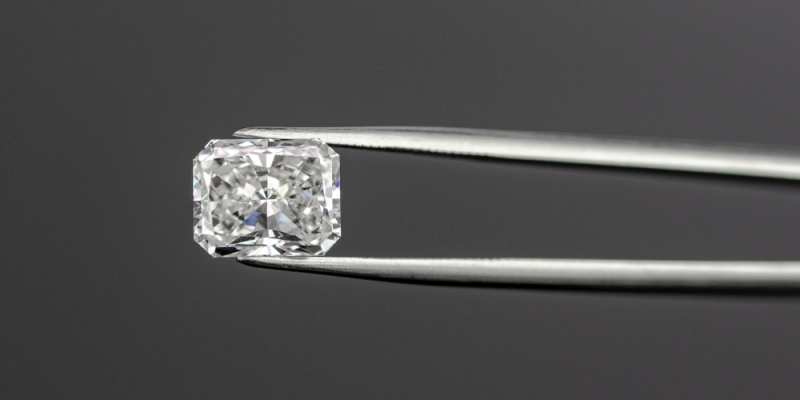
What Is Radiant-Cut Diamond?
The radiant cut diamond can be described as a hybrid shape, combining elements of both round and emerald cuts. It features a rectangular or square outline with clipped straight edges, similar to the emerald cut.
However, what sets the radiant cut apart is its facet arrangement. While the emerald cut has horizontal facets, the radiant cut incorporates both vertical and horizontal facets, resulting in a distinct visual appearance.
Initially, the radiant cut was patented, but the patent has since expired, and the term is now used generically for this diamond shape. GIA certificates refer to the radiant cut as a “cut-cornered rectangular modified brilliant.”
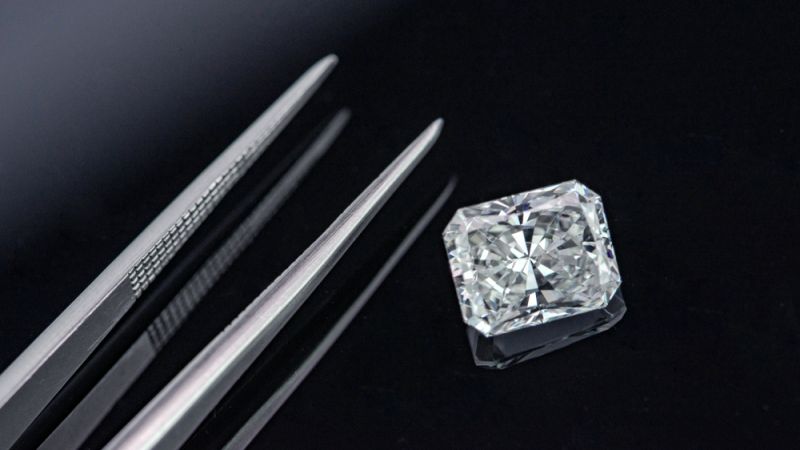
Radiant Cut: Length-To-Width Ratio And Corner Size
Radiant cut diamonds can have varying overall outlines, ranging from square to more rectangular shapes. The length-to-width ratio of the diamond plays a significant role in determining its visual appearance.
It’s important to consider personal preference when choosing the length-to-width ratio, as it can greatly impact the diamond’s look. However, it’s worth noting that an excessively elongated radiant cut diamond may exhibit a light performance issue known as the “bow-tie” effect.
The length-to-width ratio is a measure of how closely the diamond resembles a square shape. As long as the diamond’s light performance is not compromised, the preferred length-to-width ratio for a radiant cut diamond is mostly a matter of personal taste.
When it comes to the corners of the radiant cut diamond, they should be beveled to a balanced size. They shouldn’t be too small, as they need to maintain the angularity that defines the shape, nor too big, as they may start to resemble the sides of the diamond. Striking a balance in the size of the corners is essential for an aesthetically pleasing appearance.
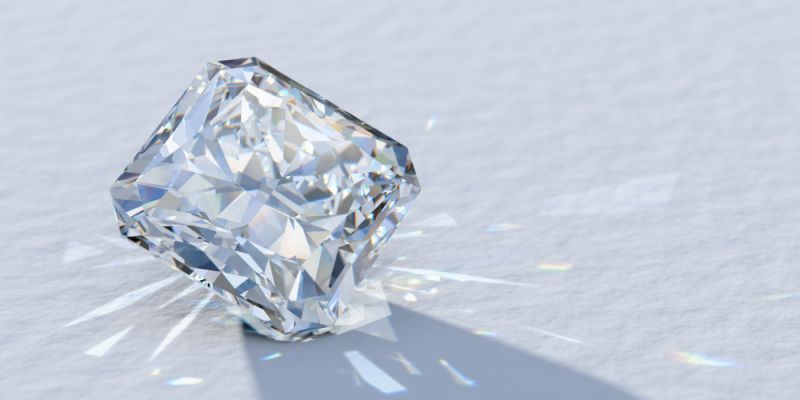
Radiant Cut: Color Grade
Radiant cut diamonds have a tendency to accentuate the body color of the stone. The arrangement of facets in the radiant cut allows longer ray paths through the diamond, which captures more of the body color. As a result, many fancy-colored diamonds are often cut into a radiant shape.
To ensure a desirable appearance, it is recommended to choose a slightly higher color range for radiant cuts. Unlike well-cut round brilliant diamonds that can mask some of the stone’s color and appear whiter than their actual color grade, radiant cuts and other fancy-shaped diamonds tend to have the opposite effect.
For radiant-cut diamonds that appear white, it is advisable to consider diamonds within the upper near-colorless range, typically between G and H color grades. Diamonds in the lower color range may start to exhibit a slight yellow tint. By selecting a radiant-cut diamond in the recommended color range, you can achieve a visually pleasing and colorless appearance.
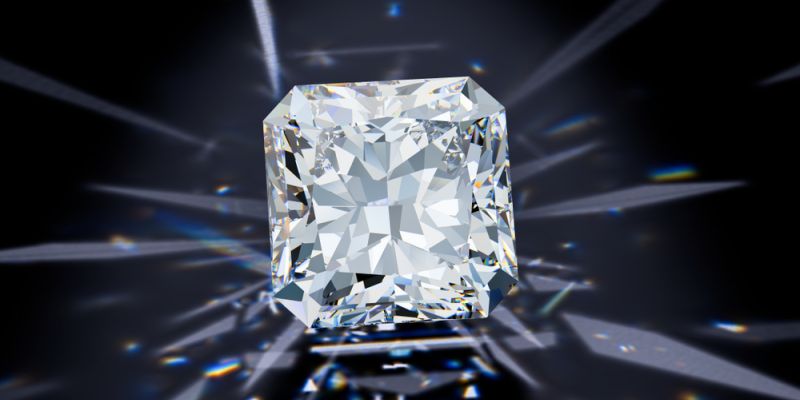
Radiant Cut: Clarity Grade
Radiant cuts have an advantage over some other diamond cuts, such as emerald cuts, when it comes to hiding inclusions. Emerald cut diamonds tend to reveal clarity features more prominently compared to other cuts.
The intricate scintillation patterns of radiant cuts make it more challenging to notice inclusions. As a result, you can often find radiant cut diamonds with lower clarity grades that appear eye-clean, allowing you to save money without compromising on beauty.
There are many stunning radiant diamonds available in the SI clarity range. However, it’s important to ensure that the inclusions do not negatively affect the stone’s transparency, as this can result in a loss of brilliance. Even with a top-quality cut, this effect can be subtle and may require the expertise of a professional to identify. Working with a skilled diamond expert will provide you with the best assurance of finding an excellent radiant cut diamond.
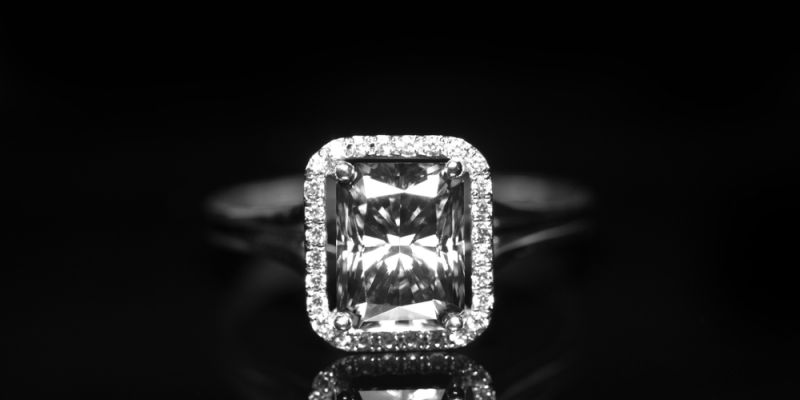
Radiant Cut: Light Performance
The cut of a diamond, including the radiant cut, plays a crucial role in its brilliance, fire, and sparkle. However, evaluating the light performance of a radiant cut diamond can be challenging for non-experts.
While a grading report provides information about various aspects of the diamond, it doesn’t offer specific details about its light performance. Proportions, measurements, polish, and symmetry grades alone do not reveal how well the stone handles light. Therefore, additional “diagnostics” are necessary to assess light performance.
Diamond images and videos can be helpful in understanding the diamond’s appearance, but more advanced imaging techniques like ASET (Angular Spectrum Evaluation Tool) provide even more detailed information. ASET generates a lightmap that shows brightness, light leakage, and contrast details.
However, interpreting the results of these programs can be complex and requires some experience. Therefore, it is recommended to consult with a professional who can provide in-depth analysis of the diamond and offer insights into these critical factors. They can help you understand the diagnostics and make an informed decision about the radiant cut diamond’s light performance.
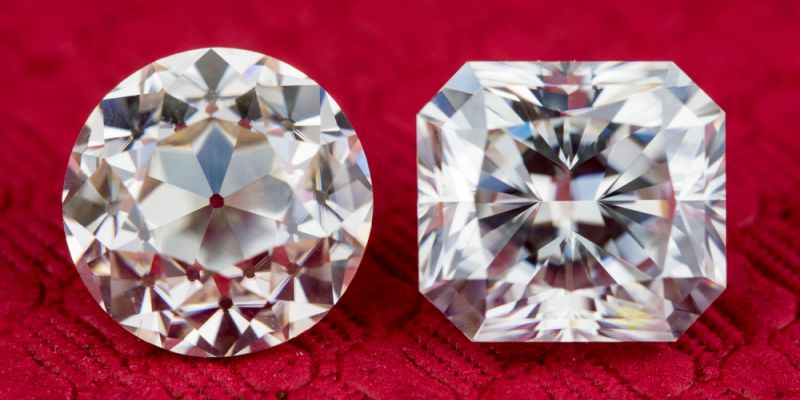
Does A Radiant Cut Look Bigger?
Sometimes, the elongated shape of a radiant cut diamond can create an illusion of appearing larger than other diamond shapes with the same carat weight. However, this perception can be misleading.
If a radiant diamond is cut too deep, it will retain carat weight in its depth and may not give the visual impression of size compared to a well-cut diamond of the same carat weight.
Furthermore, even if a radiant diamond is proportioned well to have a good surface area, if it lacks in light performance, it may appear smaller than a diamond with better brilliance.
Diamonds that are cut ideally tend to create the illusion of appearing larger than diamonds of average cut quality with the same proportions. This is because ideal cut diamonds effectively reflect more light back to the viewer’s eyes, enhancing their perceived size.
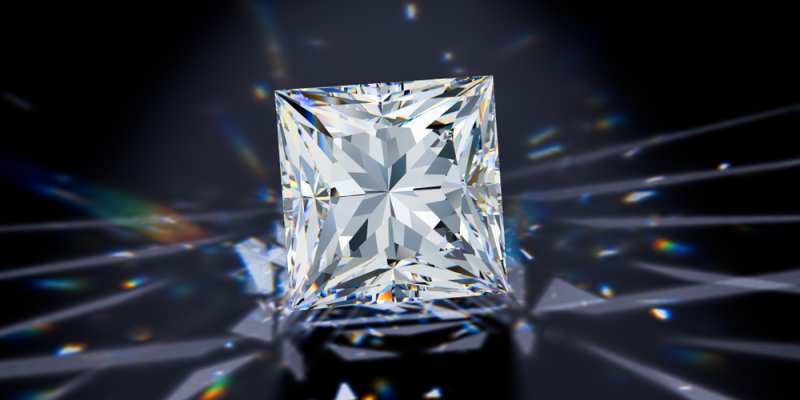
What Is A Princess Cut Diamond?
The princess-cut diamond is a square-shaped diamond that exhibits remarkable brilliance and fire.
This unique diamond shape is created by cutting the rough diamond in an inverted pyramid fashion. Princess cut diamonds are highly sought-after for engagement rings due to their exceptional sparkle.
The finest quality princess cut diamonds possess well-defined square shapes, with a preferred length-to-width ratio of 1.0-1.05. While there are princess cut diamonds with a rectangular shape, they are generally less desirable as they may lack the same level of brilliance.
Engagement rings adorned with princess cut diamonds that have an Ideal or Excellent cut quality are truly stunning.
Typically, a princess-cut diamond comprises around 50 to 58 facets, depending on how it is precisely cut. The majority of these facets are located on the crown and pavilion, with a few found on the girdle of the diamond.
In addition, princess cut diamonds often showcase two or four chevron patterns, creating cross-shaped patterns that can be observed when viewing the stone from above.
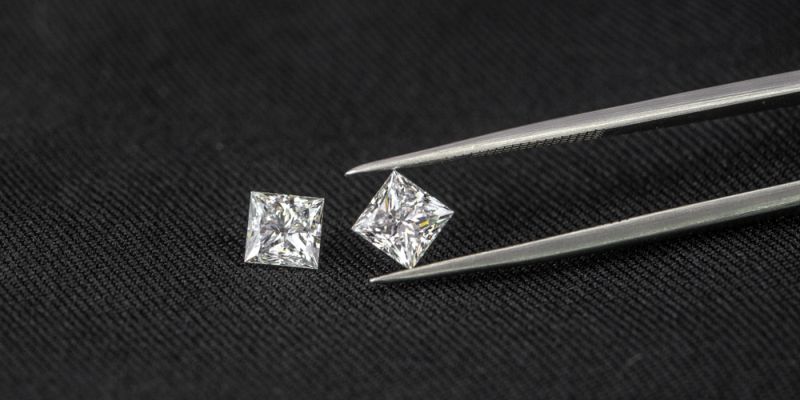
Princess Cut: Color Grade
When considering the color of a princess cut diamond, it’s important to exercise caution compared to a round brilliant cut diamond.
The round brilliant cut diamond has superior light return, making it more effective at concealing the true color of the stone. Therefore, for the best value when purchasing a princess cut diamond, we recommend opting for an H or I color grade.
While you could choose a higher color grade, the minimal increase in whiteness isn’t worth the additional cost you would incur.
However, if you plan to set the diamond in a ring and want the centerpiece gem to match the color of the accent stones, it’s crucial to ensure their colors align.
Unless you intend to set the diamond in a yellow or rose gold setting, we advise against selecting a J color grade for princess cut diamonds, as they tend to retain color slightly more prominently than round brilliant cut diamonds.
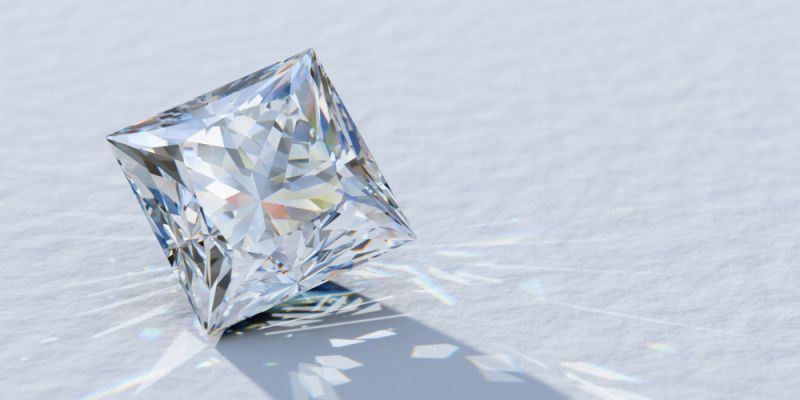
Princess Cut: Clarity
When it comes to clarity, a princess cut diamond is similar to a round brilliant cut diamond in terms of its ability to conceal inclusions to a decent extent. However, it’s important to consider the durability issues associated with princess cut diamonds.
Due to their four corners, princess cut diamonds are more prone to chipping. If an inclusion is located in one of the corners, it significantly increases the risk of the diamond getting chipped.
If you’re purchasing a princess cut diamond already set in a ring, this becomes less of a concern, unless you anticipate resetting the diamond into a new ring in the future.
For round brilliant cut diamonds, we generally recommend opting for an SI2 clarity grade. However, with princess cut diamonds, it becomes a bit more challenging as eye-clean options are relatively scarce. Therefore, we recommend aiming for VS2 or SI1 clarity grades for princess cut stones, ensuring they are confirmed to be eye-clean.
Finding princess cut diamonds with these clarity grades can be difficult due to the high quality of rough stones required to create princess cuts. However, if you are able to find an eye-clean princess cut diamond, it would offer exceptional value.
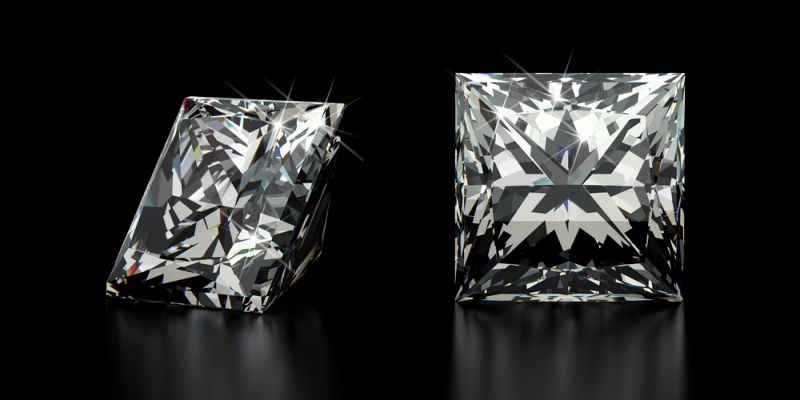
Princess Cut: Proportions
When it comes to princess cut diamonds, here are the recommended cut parameters:
- Depth percentage: between 68% and 75%
- Table percentage: below 75%
- Polish & symmetry: Good, Very Good, or Excellent
- Length-to-width ratio: 1.00 to 1.05
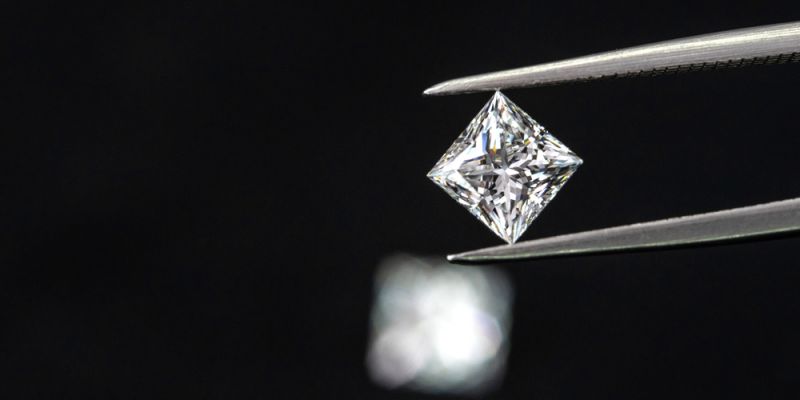
What Are Chevrons?
The number of facets in a princess cut diamond is not fixed and can vary depending on the specific facet design. The pavilion of a princess cut diamond typically features chevron facets, which have a boomerang-like appearance.
Princess cuts can have two, three, or even four chevron patterns. When more facets are added to a surface of a given size, the individual facets become smaller. Consequently, the visual appearance of a princess cut with two chevrons will differ from that of a princess cut with four chevrons, even if their sizes are similar. Larger facets tend to produce bolder sparkles, while smaller facets create a more subtle sparkling effect.
As the size of the diamond increases, the number of chevron patterns also tends to increase, still resulting in noticeable flashes of light. However, it’s important to note that smaller diamonds can only accommodate a limited number of chevrons without compromising the larger sparkles.
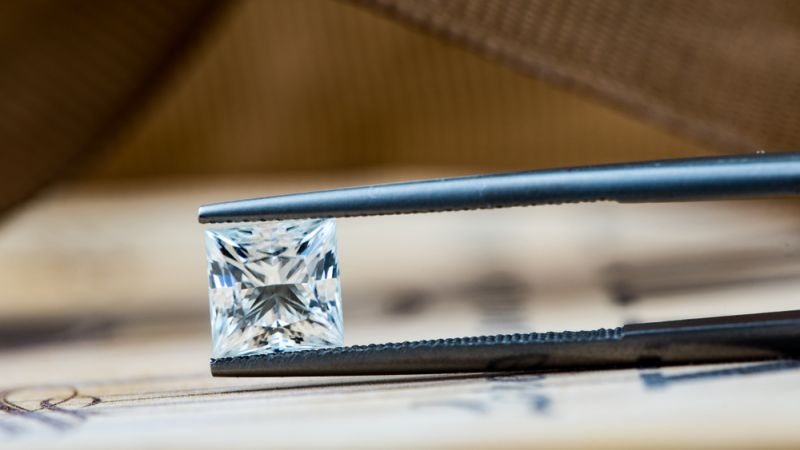
Radiant Cut Vs. Princess Cut: Design
From an aesthetic standpoint, the radiant cut and princess cut diamonds share certain common characteristics.
Both cuts feature an angular shape, either square or rectangular, and possess large table facets. However, their design diverges at this point. The radiant cut has beveled corners, which lend it a more softened and less geometric appearance, while the princess cut diamonds have square corners.
In terms of durability, the radiant cut has an advantage. The sharp corners of princess-cut diamonds are more susceptible to chipping, particularly if there are inclusions located near those corners.
While princess cut diamonds are square and generally appear their size when set in rings, radiant cut diamonds tend to be rectangular. Their longer diagonal measurement creates the illusion of a larger size than their actual carat weight.
It is worth noting that some radiant cut diamonds have proportions that are closer to a square shape rather than a rectangle, although these account for a smaller proportion of the radiant cuts available in the market.
Additionally, princess cut diamonds have a larger table facet compared to radiant cut diamonds. This feature gives the princess cut a unique and impressive appearance, but it can also make inclusions more noticeable in certain princess-cut stones.
Nevertheless, the facet arrangement of princess cut gems is typically effective at concealing internal imperfections.
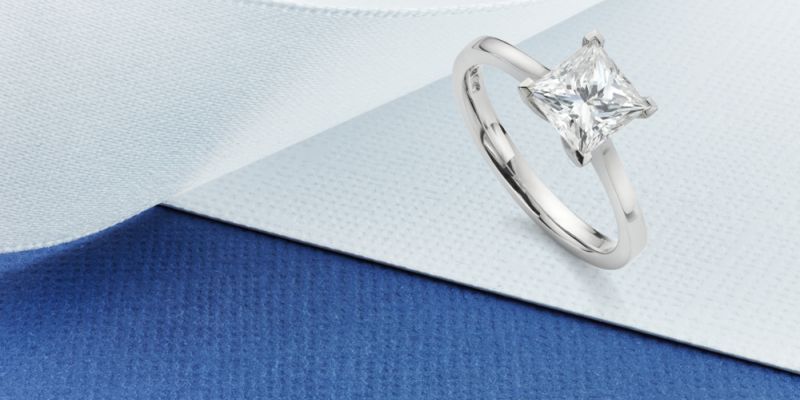
Radiant Cut Vs. Princess Cut: Brilliance
Every diamond is unique, and besides the shape, other factors such as cut quality can significantly influence a diamond’s brilliance.
Typically, a well-cut radiant cut diamond will reflect more light than an equally well-cut princess cut diamond, making it a slightly better option if you prioritize optimal brilliance.
However, it’s important to note that a well-cut princess-cut diamond can also display exceptional brilliance. This means that both shapes are fantastic choices if you’re seeking a stunning diamond that is designed to reflect light beautifully.

Bottom Line
When it comes to comparing radiant cut vs. princess cut, there isn’t a definitive “better” diamond shape that suits everyone.
The princess cut offers a timeless and stunning appearance, designed to deliver excellent brilliance.
On the other hand, the radiant cut features a more contemporary shape, a slightly larger visual presence, enhanced durability, and a touch more brilliance and sparkle.
If you have any uncertainties or questions, it’s always advisable to seek assistance from a professional. They can provide you with the necessary information and guidance to help you make your purchase decision. Let us know which cut you ultimately decide on!


